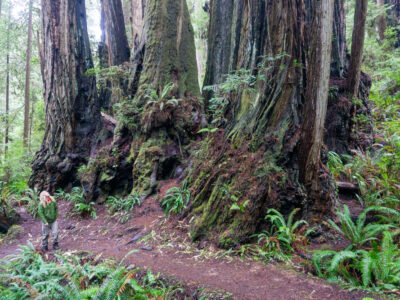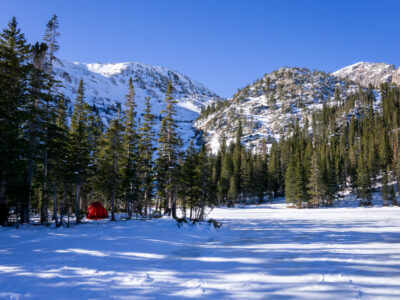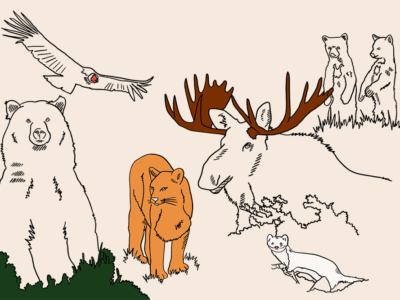03 Mar Driving Time to Backpacking Trailheads Across America
Journal
Driving Time to Backpacking Trailheads across America
March 5, 2020
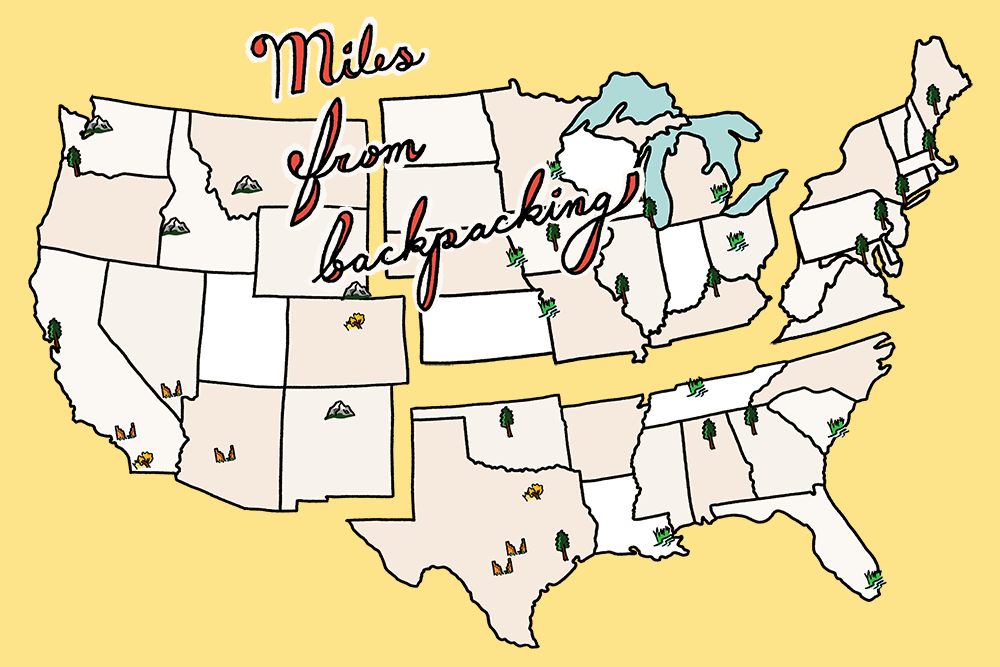
Dylan and I moved across the country in 2016 and then again in 2018. The first move was to follow a very-cool-sounding structural engineering job all the way to the San Francisco Bay Area. We got lucky that California happened to be so rich in backpacking opportunities and we quickly became obsessed with exploring our new state. Then reality set in that we would never be able to afford living there long-term, so we started looking for a new home.
One of the most important criteria for our new home was that there had to be backpacking within a two hour drive. We also wanted to live in a city with at least a couple good museums and a good collection of tasty restaurants. The obvious choices were Seattle, Portland, and Denver — all expensive choices in their own right. We also considered less obvious nature towns like Boise, Portland (Maine), and Albuquerque. This whole search made me wonder if any American town could be a nature town if we just tried hard enough.
So I did the research and these are my findings:
The Criteria
First things first, let’s talk about how I gathered the data. The list of cities I included in my search was made up of the twenty most populous cities in America. I also added some lower-population cities if I noticed a big geographical gap between the cities listed. Some of the cities I included were also from my own curiosity about backpacking in the area or places that people seem to really really want to move to.
When I calculated driving times and distances, I used the Google maps “center of the city.” This basically means I found the trailhead in Google Maps and then asked for the driving directions from the city in general (i.e. “Austin”). Doing it this way always resulted in getting the driving time from the downtown of wherever I searched. I know a lot of people don’t live in the downtowns of their cities, but I couldn’t figure out a more fair way to get the information.
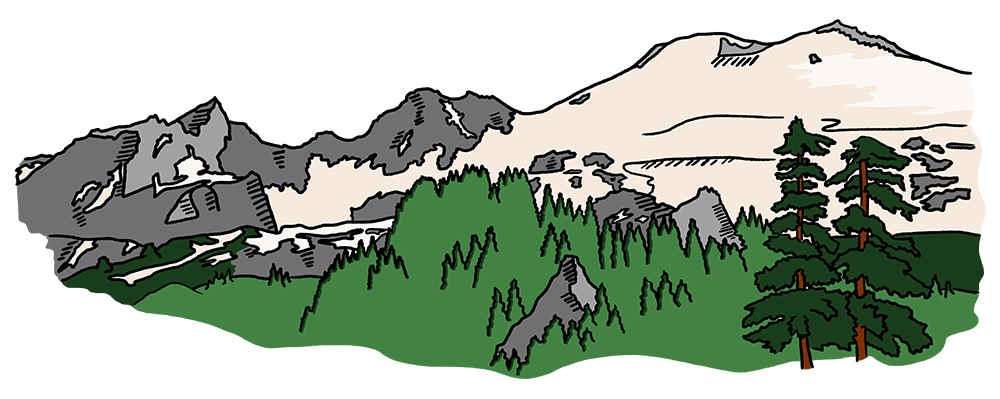
The Results
Overall, I was surprised that pretty much all the cities I researched had backpacking trailheads within a two hour drive from downtown. Now, the quality of the backpacking may have questionable — some of the sites were “walk-in” campsites and some of them didn’t look too appealing — but overall, I found a lot of decent trails.
In the West, I found a ton of traditional mountain and canyon trips; while in the Midwest, I found some more mellow walking trails that happened to have a couple campsites. In the South, especially Texas, the closest thing I could find to backpacking outside of the incredibly faraway national parks, was “walk-in” campsites at the nearest local park.
For those who have never encountered “walk-in” campsites before, they’re maintained campsites that you have to hike about 1 to 2 miles to reach. Sometimes you’ll even get a picnic table and other camp furniture. If you get lucky, some parks will have “walk-ins” that make you hike up to 6 or 7 miles. That’s when I start considering it backpacking, but I decided to include the 1 to 2 miles walk-ins in my research because sometimes it was all I had to work with.
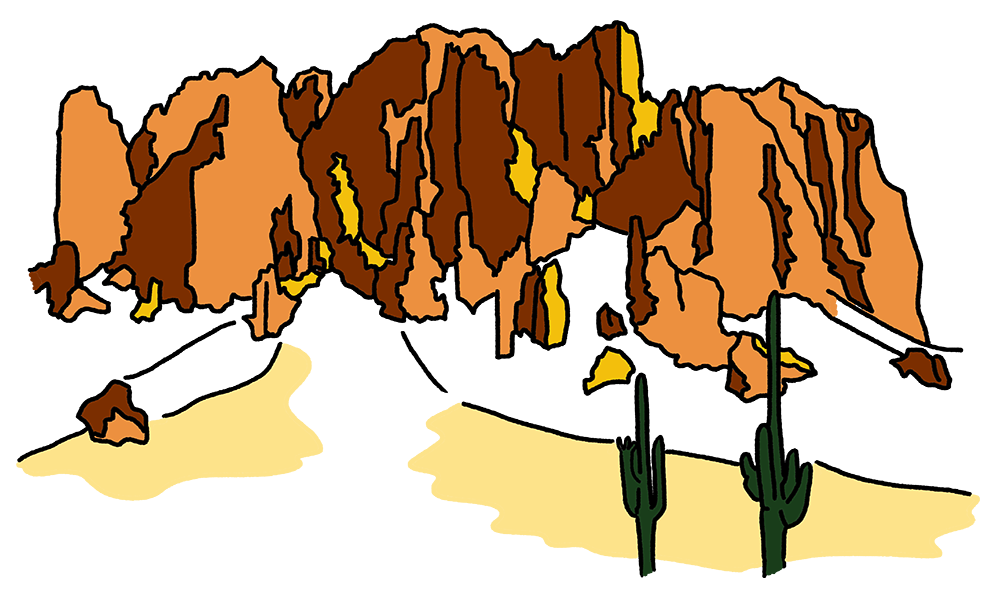
The hardest part of the search for me was the Northeast. I’m not sure if the backpacking is just not very well documented, but some of the only backpacking I found was on the Appalachian Trail and the Long Trail. Luckily, both of these trails are decently close to larger cities like Portland, Maine and Boston.
Unsurprisingly, Denver had one of the shortest drive times of just over 30 minutes to White Ranch Open Space. We’ve actually considered backpacking here on a weekday for kicks and waking up extra early for a day of work. Denver also has the large and highly-backpackable Indian Peaks Wilderness about an hour away from downtown. The only downside of backpacking here and in a lot of other nearby parks is that the trails are either horrendously crowded or very hard to get permits for.
One of the most shocking things I learned while researching this article was that New York City has a backpacking trailhead less than two hours always from downtown Manhattan — and it was accessible by public transportation! The trail is part of the Appalachian Trail network and the trailhead is close to a bunch of cute cottage-y towns. Another surprise to me was how easy it was to find backpacking in the Southeast. Atlanta in particular was surrounded by very scenic trails that were only about 1.5 to 2 hours away.
The West
Portland, Oregon – 0:50 hrs – Tillamook State Forest
Seattle, Washington – 0:53 hrs – Mt. Baker-Snoqualmie National Forest
Los Angeles, California – 0:29 hrs – Angeles National Forest
San Francisco, California – 1:03 hrs – Pescadero Creek Park Complex
San Diego, California – 1:08 hrs – Garnet Peak-Champagne Pass Loop
Las Vegas, Nevada – 0:50 hrs – Mt. Charleston Wilderness
Boise, Idaho – 2:20 hrs – Boise National Forest
Phoenix, Arizona – 1:05 hrs – Superstition Wilderness
Albuquerque, New Mexico – 1:38 hrs – Pecos Wilderness
Denver, Colorado – 0:33 hrs – White Ranch Park
Bozeman, Montana – 0:40 hrs – Lee Metcalf Wilderness
Cheyenne, Wyoming – 1:50 hrs – Rocky Mountain National Park
The South and Southeast
San Antonio, Texas – 1:55 hrs – Lost Maples State Natural Area
Austin, Texas – 2:50 hrs – Lost Maples State Natural Area
Houston, Texas – 1:03 hrs – Sam Houston National Forest
Dallas, Texas – 1:30 hrs – Dinosaur Valley State Park
New Orleans, Louisiana – 1:40 hrs – Desoto National Forest
Charleston, South Carolina – 0:45 hrs – Francis Marion National Forest
Nashville, Tennessee – 0:31 hrs – Long Hunter State Park
Oklahoma City, Oklahoma – 3:35 hrs – Ouachita National Forest
Atlanta, Georgia – 1:23 hrs – F.D. Roosevelt State Park
Miami, Florida – 1:20 hrs – Big Cyprus National Preserve
Birmingham, Alabama – 1:23 hrs – Talladega National Forest
The Northeast
New York City, New York – 1:04 hrs – Harriman State Park
Washington D.C., District of Columbia – 1:05 hrs – Raven Rock
Philadelphia, Pennsylvania – 1:40 hrs – Hawk Mountain
Boston, Massachusetts – 2:05 hrs – White Mountain National Forest
Portland, Maine – 2:00 hrs – White Mountain National Forest
The Midwest
St. Louis, Missouri – 1:30 hrs – Onondaga Cave State Park
Kansas City, Missouri – 1:03 hrs – Woodridge Public Use Area
Omaha, Nebraska – 3:10 hrs – Woodridge Public Use Area
De Moines, Iowa – 1:15 hrs – Stephens State Forest
Minneapolis, Minnesota – 1:03 hrs – Wild River State Park
Milwaukee, Wisconsin – 0:50 hrs – Kettle Moraine State Forest
Chicago, Illinois – 2:15 hrs – Kettle Moraine State Forest
Detroit, Michigan – 1:03 hrs – Pinckney State Park
Columbus, Ohio – 0:15 hrs – Scioto Grove Metro Park*
Louisville, Kentucky – 0:58 hrs – Hoosier National Forest
* This park is a semi-urban park with backpack-in campsites maintained by REI.
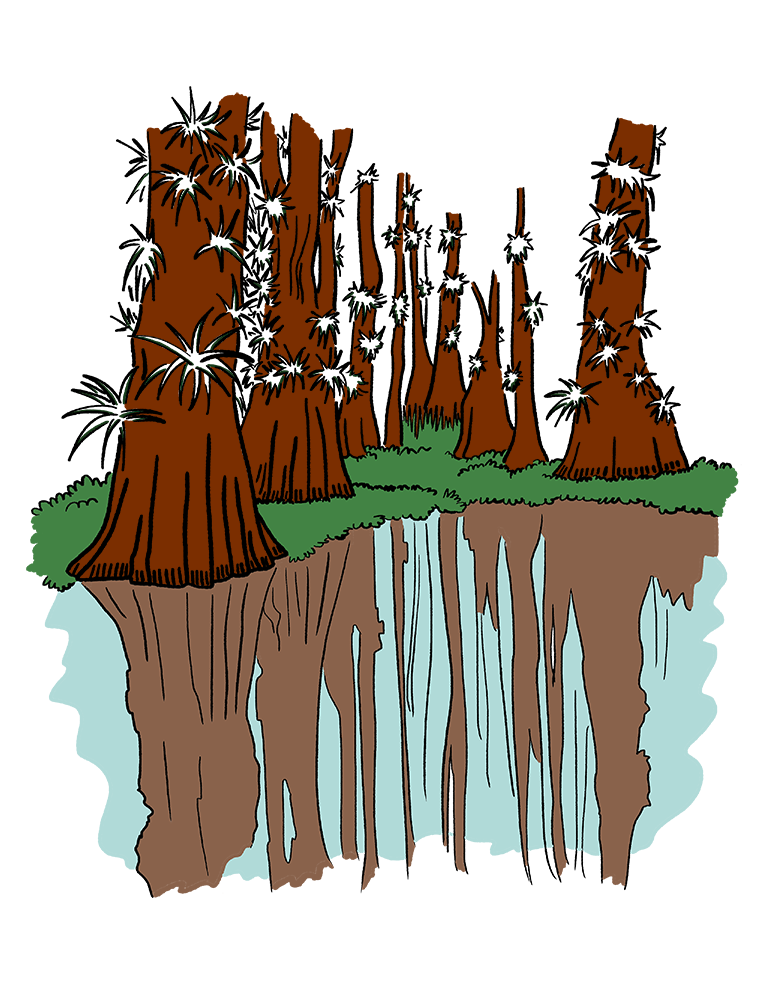
Conclusions
So, did my opinions about “backpack cities” change? Not particularly. I still think there’s specific places where backpacking makes infinitely more sense than others. I think I’ve expanded my definition of “backpacking city” though. I’m definitely including places like Atlanta and Charlotte on my list now. But I’m also kicking Portland, Maine off the list because the backpacking trails were so far away and they looked more like day hiking trails.
And if anything major came out of this intensive research, it reaffirmed that we moved to the exact right place for us. I still can’t believe that Denver was one of the closest cities to good backpacking and that makes me very happy.
Thinking about moving and trying to figure out your backpacking situation? Or maybe I made a mistake on a drive time? Let me know with a comment down below!

